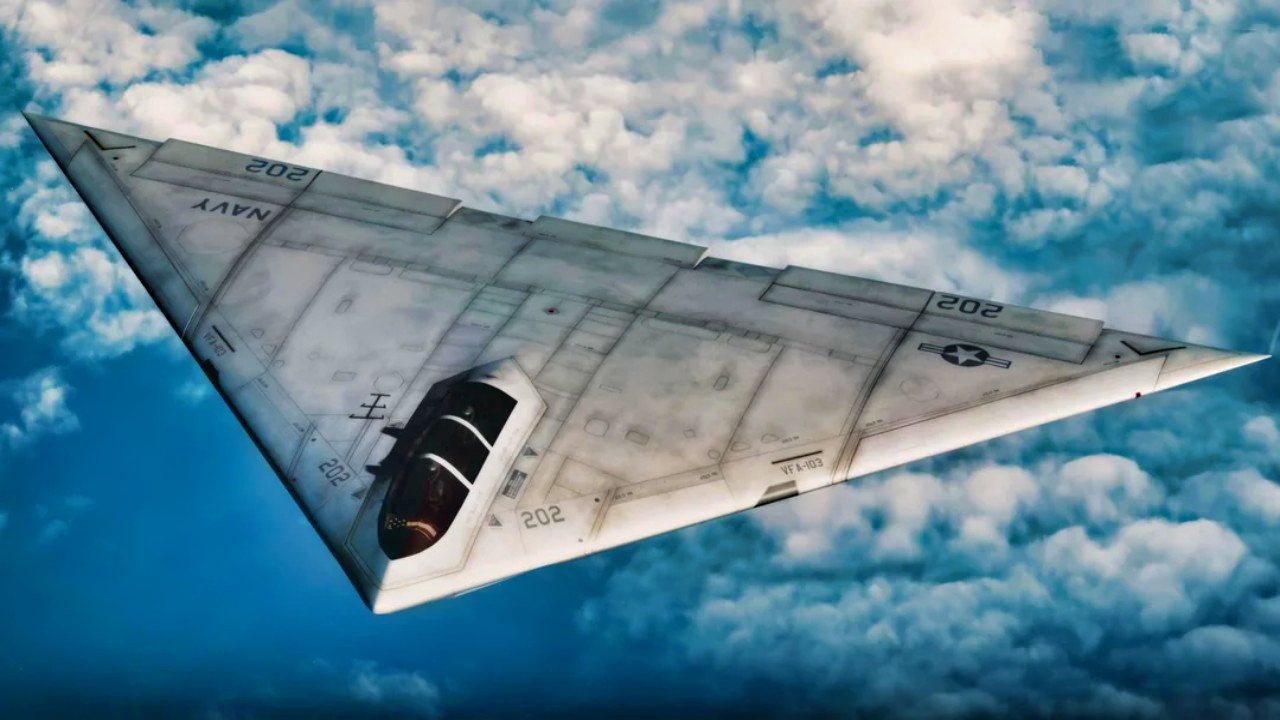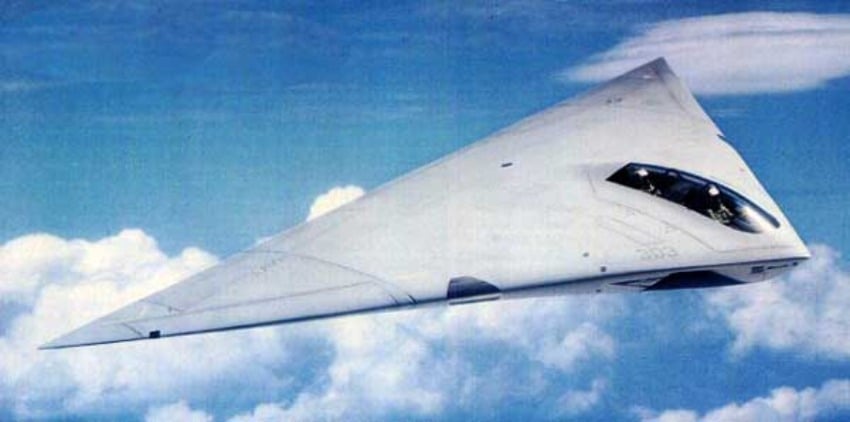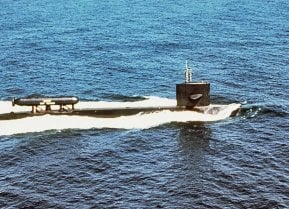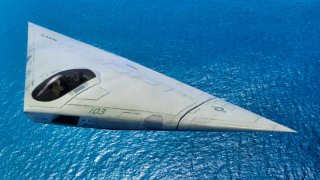Stealth Bombers on Navy Aircraft Carriers? Meet the A-12 Avenger II
The A-12 Avenger II, a stealth attack aircraft developed by General Dynamics and McDonnell Douglas, was intended to replace the A-6 Intruder in the U.S. Navy's fleet. Featuring a flying-wing design, advanced stealth capabilities, and cutting-edge technology, it was envisioned as a revolutionary platform.
What You Need to Know: The A-12 Avenger II, a stealth attack aircraft developed by General Dynamics and McDonnell Douglas, was intended to replace the A-6 Intruder in the U.S. Navy's fleet. Featuring a flying-wing design, advanced stealth capabilities, and cutting-edge technology, it was envisioned as a revolutionary platform.

-However, despite a promising concept, the project was plagued by delays, excessive weight issues, and soaring costs.
-After seven years and $5 billion invested without a successful prototype, the program was canceled in 1991 by then-Secretary of Defense Dick Cheney. The F/A-18E/F Super Hornet ultimately replaced the A-6, ending the Avenger's story before it began.
A-12 Avenger II: What Might’ve Been
The word “avenger” stems from the root word “avenge,” which Merriam-Webster defines as
(1) to take vengeance for or on behalf of
(2) to exact satisfaction for (a wrong) by punishing the wrongdoer.
Meanwhile, the comic book nerds, “The Avengers” is the blockbuster Marvel Comics comic book and film franchise, whilst to 1960s TV buffs, “The Avengers” is the campy British spy series starring the late great Patrick Macnee and Diana Rigg as Mr. John Steed and Miss Emma Peel.
To military aviation history buffs, meanwhile, the word “Avenger” could mean one of two different planes:
(1) the Grumman TBF/TBM Avenger torpedo bombers that made key contributions to America’s defeat of the Imperial Japanese Navy (IJN) in the Pacific Theatre of WWII, including the sinking of the two biggest battleships ever built, the Yamato and the Musashi.
(2) a conceptual experimental fighter plane that could have conceivably revolutionized either the current or next generation of attack aircraft, i.e. air-to-ground combat, but alas, never got off the ground in the figurative or lesser sense of the phrase. So then, dear readers, let us take a flight of fancy here and say hello to the hypothetical General Dynamics/McDonnell Douglas A-12 Avenger II.
NOTE: The A-12 Avenger II is not to be confused with the Lockheed A-12 Oxcart spy plane, which bears a striking resemblance to another Lockheed (now Lockheed Martin) “Skunk Works” brainchild, the SR-71 Blackbird, but also has some subtle yet important differences.
A-12 Avenger II's Early History & Specifications
The concept behind the Avenger II traces its roots back to 1983 when the U.S. Navy kicked off the Advanced Tactical Aircraft (ATA) program, whose intent was to develop and field a replacement for the Grumman A-6 Intruder, which had been in service since 1963, attack aircraft by 1994. Like the Intruder, the A-12 would have been an all-weather, carrier-based bomber, with the added benefit of stealth technology with even more advanced stealth characteristics than were used in the then-state-of-the-art F-117A Nighthawk. The McDonnell Douglas, now Boeing/General Dynamics tandem won the bid to develop the platform in 1988.
As conceptualized, the would-be warbird featured a flying-wing design that bore at least a passing resemblance to the Northrop (now Northrop Grumman) B-2 Spirit.
Had the Avenger come to fruition, it would have had the following specifications and vital stats:
Crew: two
Length: 37 ft 10 in
Wingspan: 70 ft 3 in
Width: 36 ft 3 in with folded wings
Height: 11 ft 3 in
Empty weight: 39,000 lb
Max takeoff weight: 80,000 lb
Powerplant: two General Electric F412-GE-D5F2 turbofan engines, 13,000 lbs thrust apiece
Max airspeed: 500 km (575.3 mph; Mach 0.65)
Combat range: 800 nmi (920 mi)
Service ceiling: 40,000 ft
Armament: Payload capability of 5,160 pounds (2,300 kg) in the internal weapons bay including
two AIM-120 AMRAAM (Advanced Medium-Range Air-to-Air Missile; nicknamed the “Slammer”) active radar-guided air-to-air missiles
two AGM-88 HARM (High-speed Anti-Radiation Missile) air-to-ground missiles (designed for destroying enemy SAM radar sites)
A-12 Avenger II: Why Didn’t It Happen?
So, what went wrong? My colleague Peter Suciu picks up the story, “The program was seen to be going smoothly, but in fact, it was far behind schedule and way over budget. Seven years and around $5 billion had been spent, and the aircraft was yet to be anywhere close to taking its maiden flight…A significant issue was that the aircraft was simply too heavy and its designers were unable to reconcile that fact. Officials at the Pentagon essentially buried their heads in the sand, refusing to believe the project wasn't on track…Another issue was its use of composite materials, as was the maintainability. Costs continued to soar, and eventually, the Department of Defense (DoD) declared that the contractors simply could not complete the program as planned. Then-Secretary of Defense Dick Cheney canceled the program outright on January 7, 1991.”

Coincidentally, that cancellation date took place ten days before the Persian Gulf War AKA Operation Desert Storm kicked off, whereupon the aforementioned F-117 dramatically demonstrated to the public the deadly efficacy of stealth technology as a bombing platform.
After the inauspicious cancellation of the A-12, the USN purchased the F/A-18E/F Super Hornet, which ended up replacing not only the A-6 Intruder but also the F-14 Tomcat jet fighter for good measure, thus killing two stones with one bird.
Meanwhile, fast-forward to June 1996, and a full-size Avenger II mockup was revealed to the general public at Naval Air Station (NAS) Joint Reserve Base Fort Worth, formerly Carswell Air Force Base (AFB) in Fort Worth, Texas. That mockup was transported to Veterans Memorial Air Park, now known as Fort Worth Aviation Museum adjacent to Meacham International Airport in north Fort Worth in June 2013. A tangible reminder of what might have been.
About the Author:
Christian D. Orr is a Senior Defense Editor for National Security Journal (NSJ). He is a former Air Force Security Forces officer, Federal law enforcement officer, and private military contractor (with assignments worked in Iraq, the United Arab Emirates, Kosovo, Japan, Germany, and the Pentagon). Chris holds a B.A. in International Relations from the University of Southern California (USC) and an M.A. in Intelligence Studies (concentration in Terrorism Studies) from American Military University (AMU). He has also been published in The Daily Torch , The Journal of Intelligence and Cyber Security, and Simple Flying. Last but not least, he is a Companion of the Order of the Naval Order of the United States (NOUS).
Image Credit: Creative Commons and/or Shutterstock.


